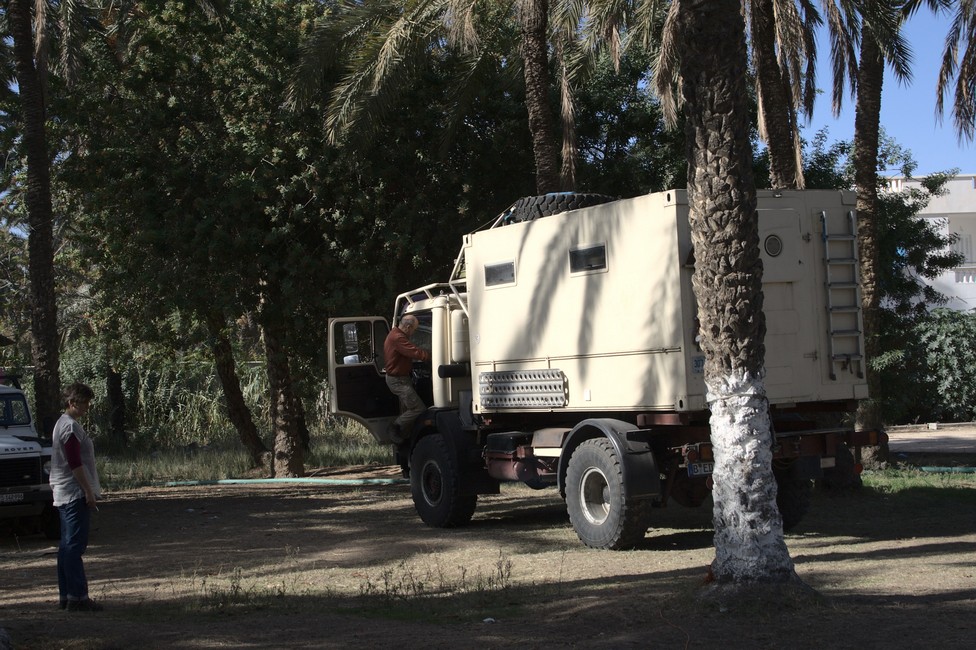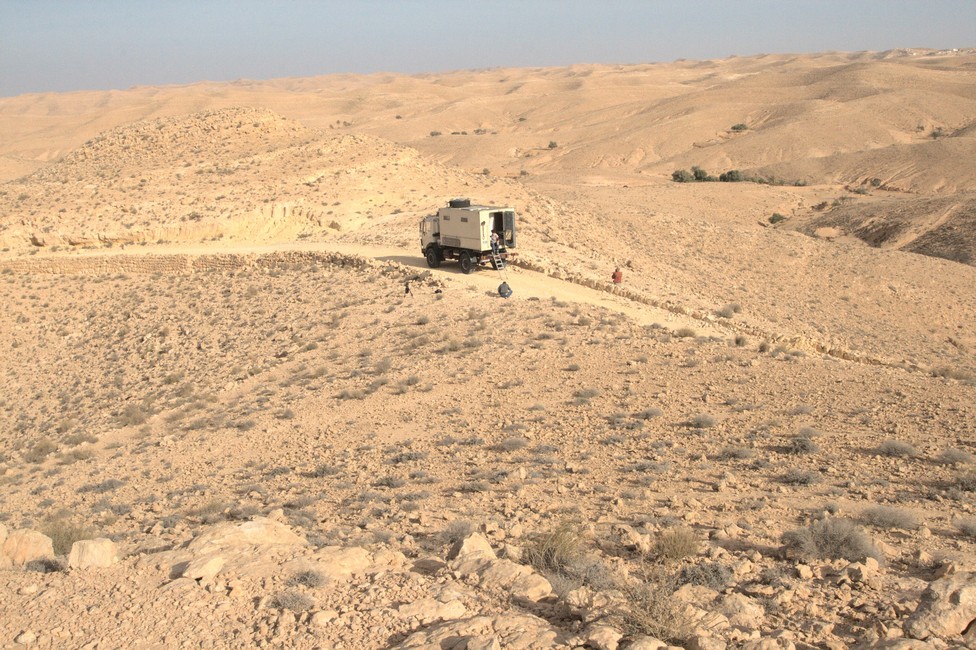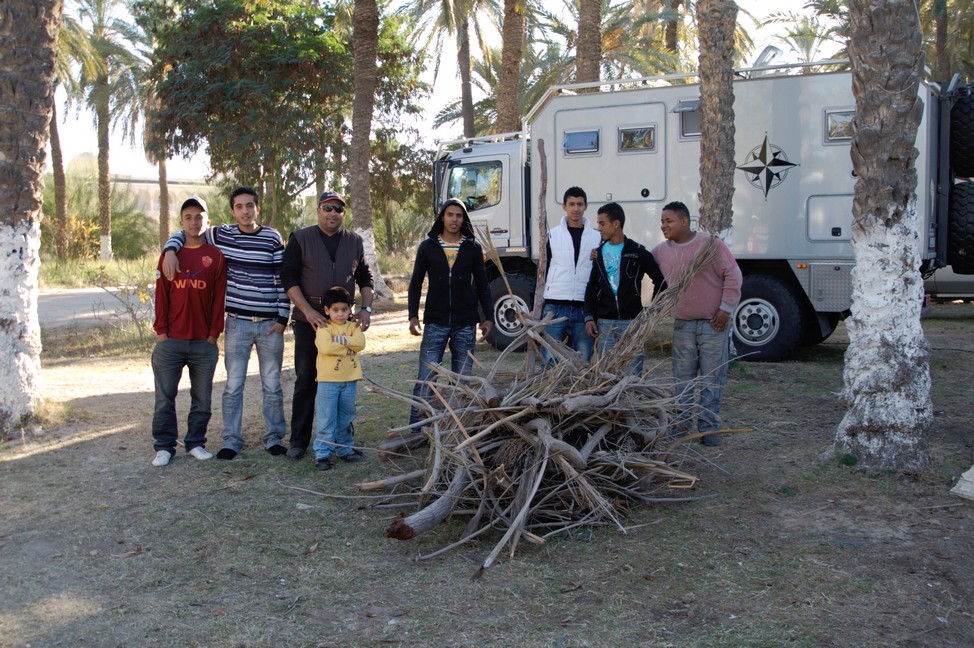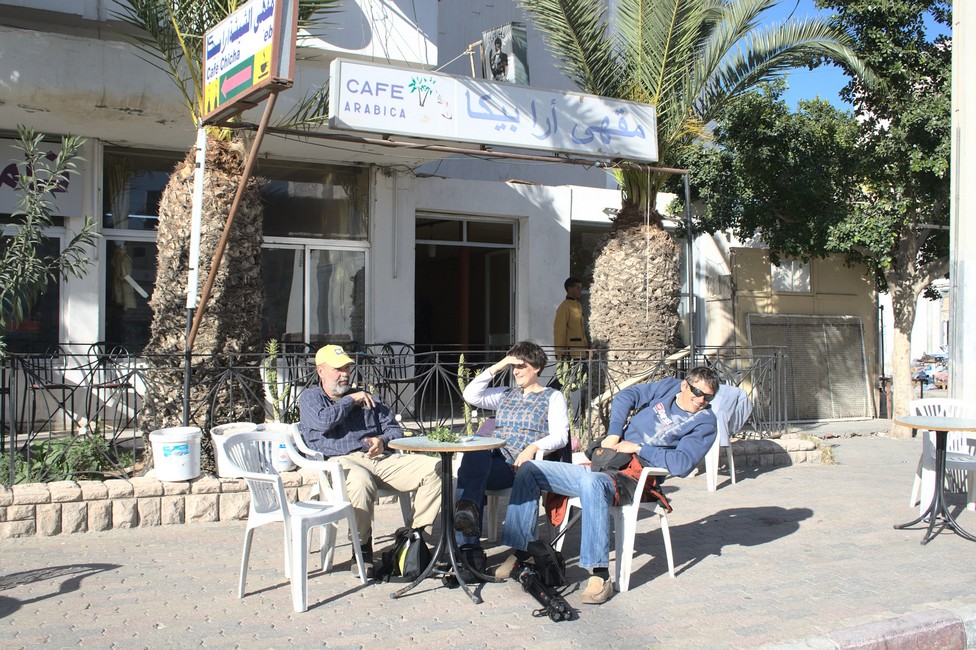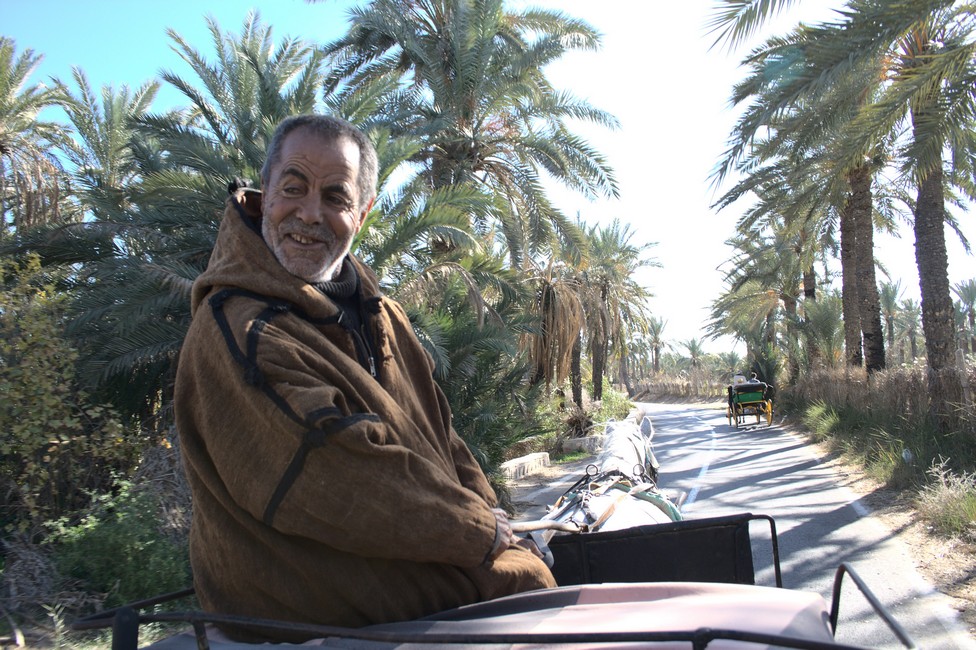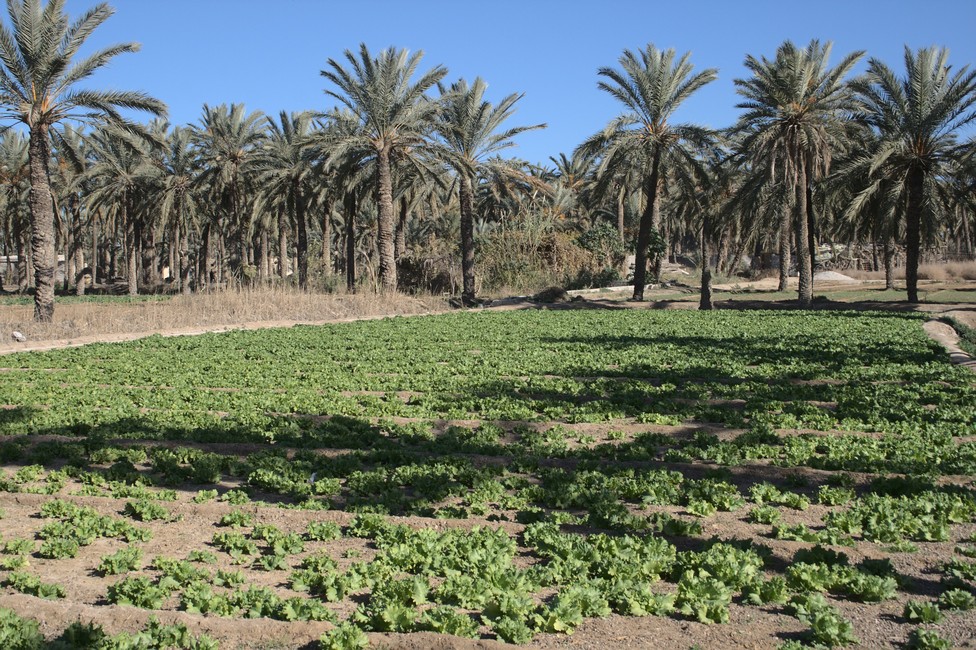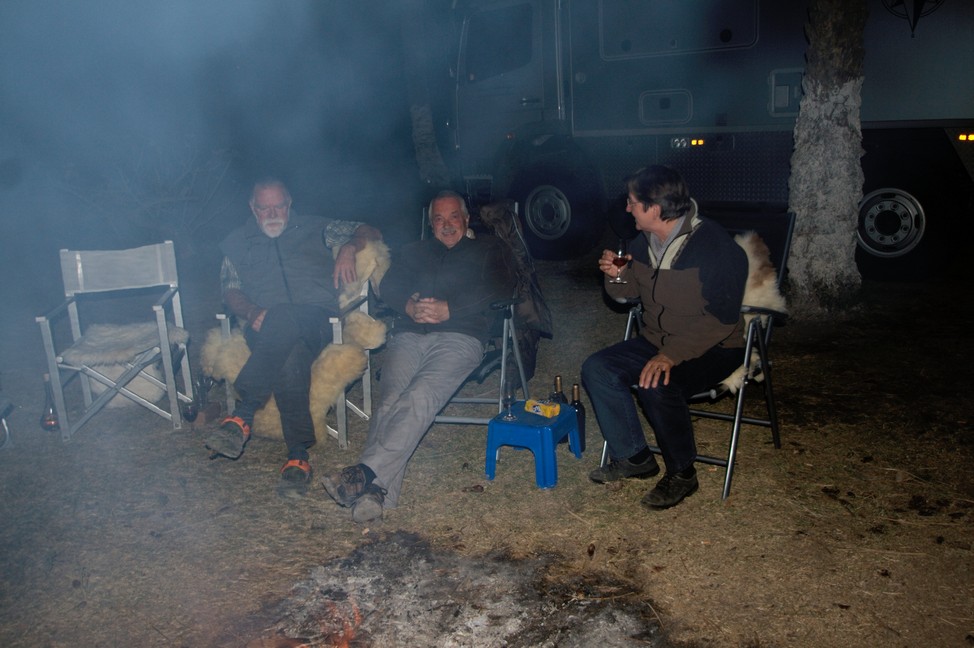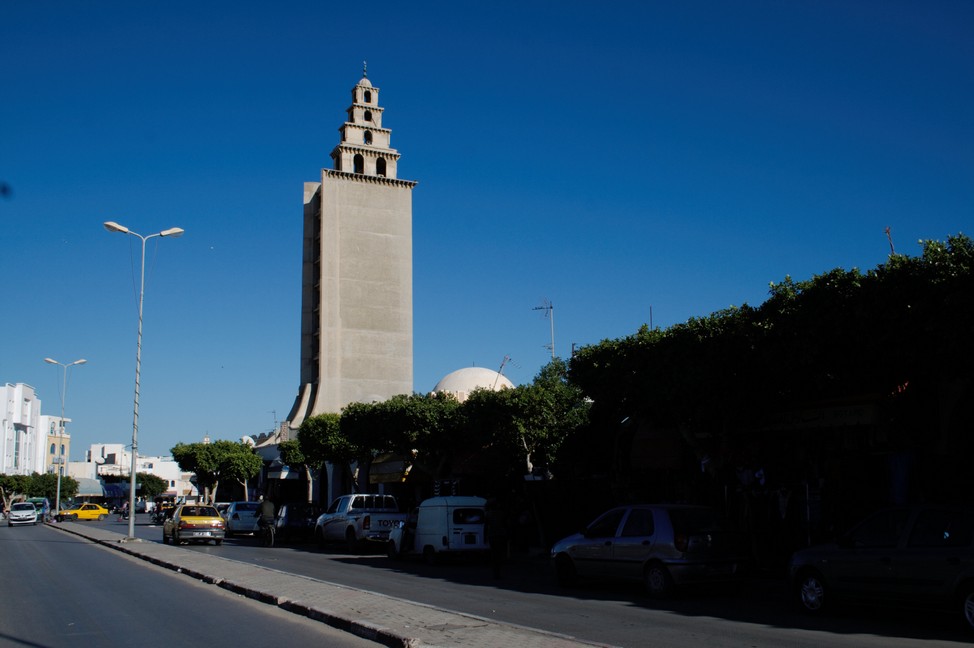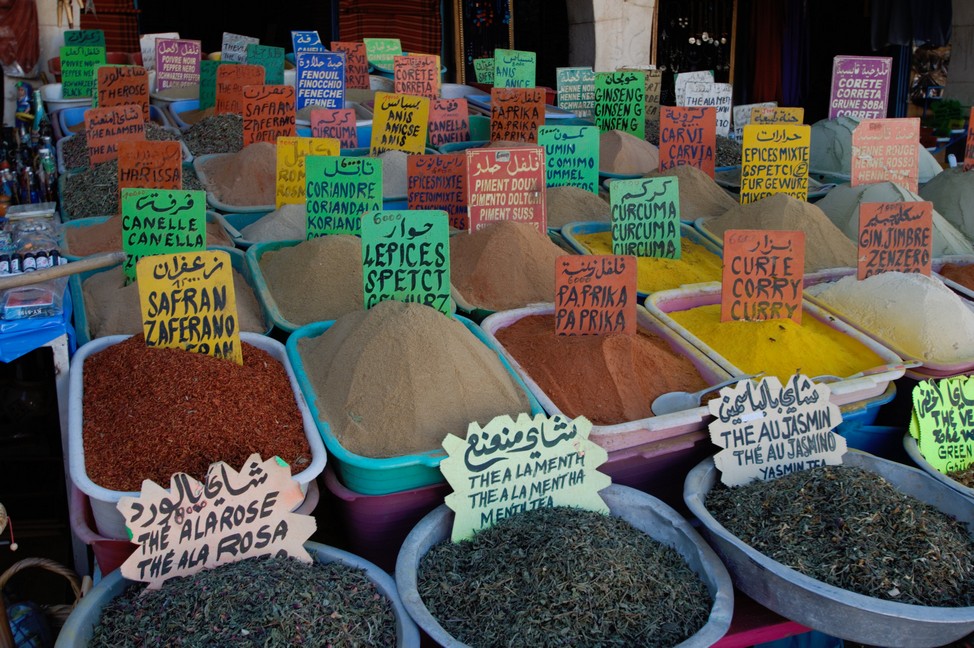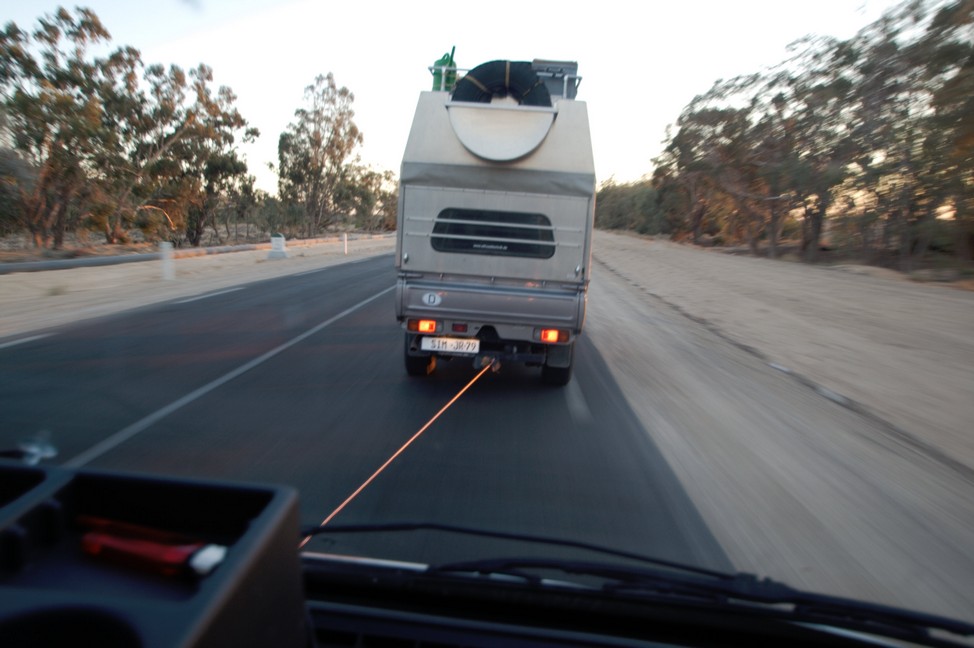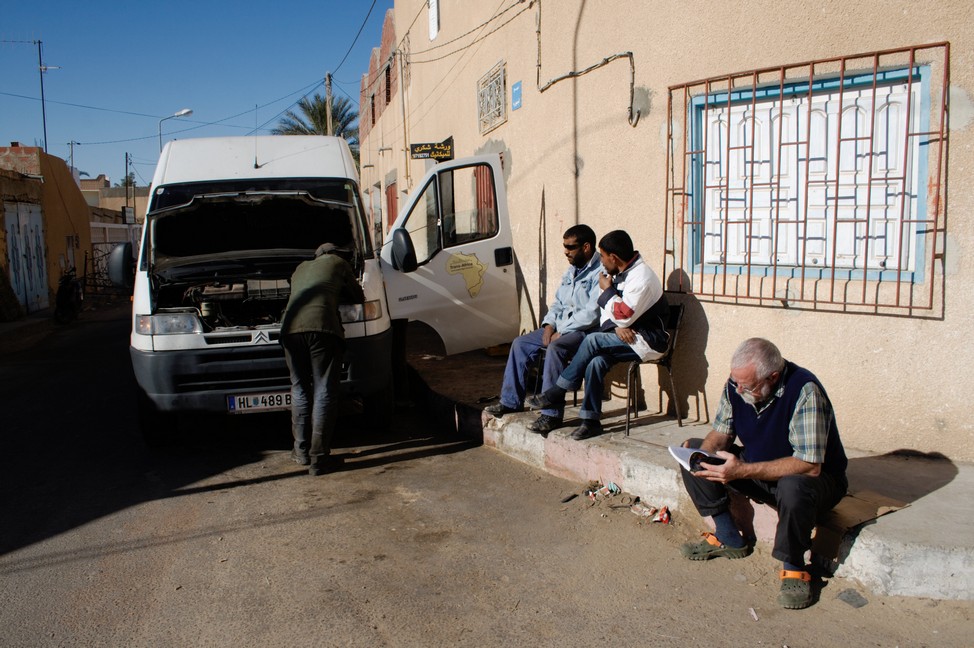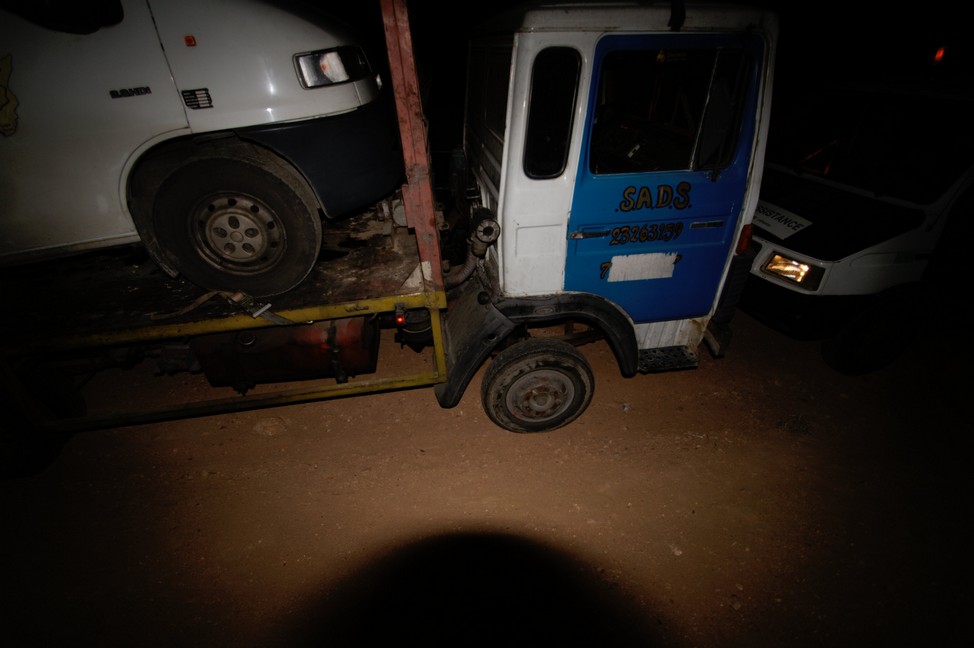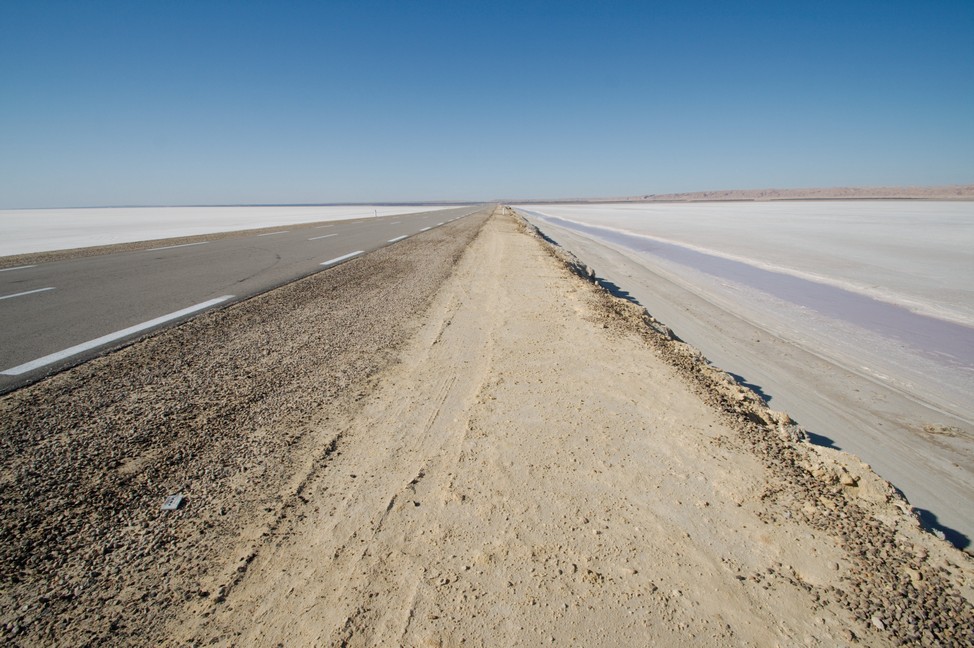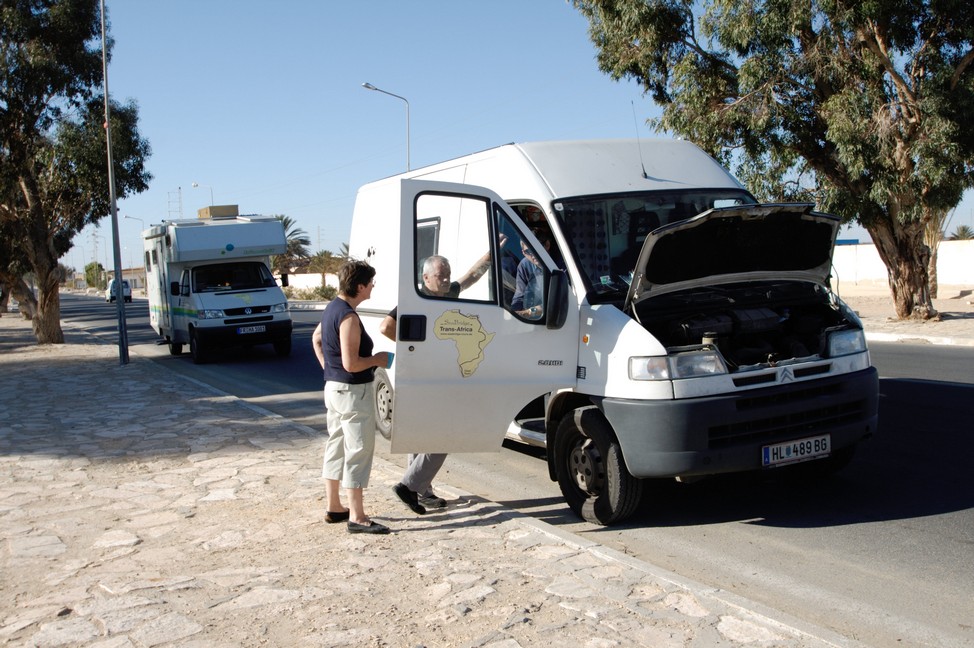In Tripoli we camp right at Martyrs Square in front of the hotel Kabir, not exactly idyllic, but functional, as we are right in the center.
From here we can reach all the tourist attractions on foot. The site also enjoys political significance, for here are the big parades held on public holidays. At the border to Libya, we had to take a guide on board with us. Bine and Bodo have gone with the guide Reeda to the Egyptian Embassy to get the visa. We want to make a tour through the Old Town.
We are curious, because Libya, particularly Tripoli, has a bad reputation in the Western world . We want to take pictures and are curious whether we will be prevented by the authorities. We enter the Old City through the old gate.
The gate is part of the city wall, which is unfortunately not preserved completely. We stroll along the old fort, which today houses the National Museum. It was built in the 11th and 12th Century and rebuilt several times by Spaniards, Turks and Italians.
The quiet side street leads directly into the souk with its striking clock tower. The tower carries colonial style elements, but was built in 1860 under an Ottoman governor.
The old town of Tripoli is currently undergoing a revitalization. With the oil boom the narrow living quarters of the Medina have been largely abandoned, only by progressive liberalization of trade a revival has started. The living quarters are going to be inhabited again, the houses are renovated and the bustle of the souk is growing again.

Of course the city is shaped by the many minarets of the medina. It is divided into quarters, each of which concentrates certain craftysmen. One of these is the quarter of the smiths, which is audible from a distance at steady sound of hammering.
We marvel at the ornate objects and the skill of the craftsmen who carry out their craft in tiny open workshops. Here especially kettle and pots are made from sheet copper and mainly tablets of brass produced . But also typical mosque attributes are produced here, such as half moon and globe.
A few steps further we come to Roman past. The triumphal arch of Marcus Aurelius forms the ancient center. It was built in 163 AD. Even the original plaster is still preserved. It is remarkable how deep it is below the present street level. The city grew on their own debris more and more into the air over the centuries .
I am surprised that the triumphal arch is preserved yet after such a long time , even though the city grew steadily, building materials were needed and in past centuries, probably nobody had great interest in European cultural buildings.
Directly behind is the Gurgi Mosque with her slender minaret in contrast to the massive arch.
Amazingly, there is a Christian church in the immediate vicinity. That Islamic countries are intolerant, you could not say, given the existence of the church. We hear that it should be a mosque today and free of any Christian symbolism. That we can not confirm.
From the outside, the building has in any case nothing to do with a mosque. Also the interior shows no signs of a mosque. Quite the contrary. Christian icons all over that catch the eye. While visiting two Muslim girls come to the church, but apparently that does not bother anyone, not even the sexton, who proudly shows us the side chapel, and points to Christian worship and this in the heart of a Muslim city.
We are now more wise and a prejudice less and walk to the lively area of the bazaar. We reach the women’s market. The term could be misunderstood, there will not be sold women, but women sell goods that are designed for women. There are many more sights in Tripoli to visit.
We end our tour at noon, for Bodo and Bine have got their visas and we continue already in the afternoon to the campsite near Leptis Magna. The ancient city is about two hours’ drive away from Tripoli.



